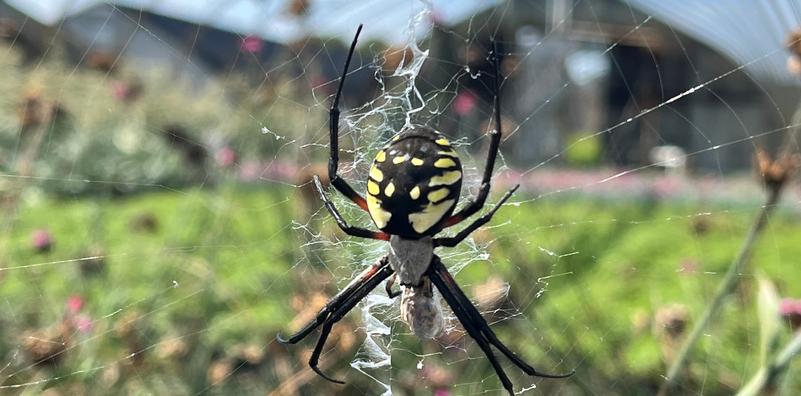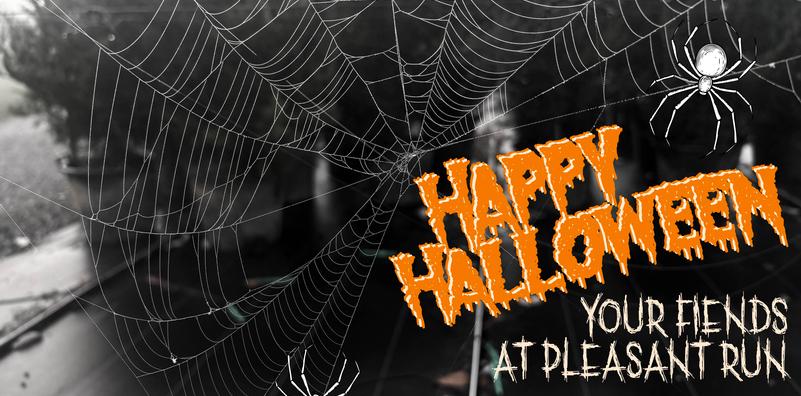Halloween Housekeeping
It’s certainly been an energetic October here at Pleasant Run. We’ve been busier than ever, traveling state to state promoting our humble New Jersey grown container plants, hitting record sales back at home, and pushing ourselves beyond the limits of exhaustion. Amidst the chaos, glimmers of beauty remind us why we’ve found ourselves in this green world to begin with. Chilly, misty mornings with dapples of the first sunrays lighting up the scarlets, burgundies, saffrons, chartreuses, and marmalades of the inward-turning trees reveal secret jewels nestled away from the brisk autumn air.
It’s at this transient moment that the appliques of nature bedazzling seasonally-affected foliage and production structures can truly be admired. Busy spiders have been to work overnight, crafting their careful traps throughout the nursery and proving themselves to be helpful predators to nurseryfolk and gardeners alike.
So, the question begs, just who is making their artistic debut in our gardens and landscapes at this time of year, particularly in the Northeast, Mid-Atlantic, and Midwest? As it turns out, quite a few leggy friends can be spotted, and they all are generalist predators against some of our least favorite flower & foliage fiends.
Common house spiders | Parasteatoda tepidariorum
Crab spiders | Thomisidae family
Funnel weavers (grass spiders) | Agelenidae family
Jumping spiders | Salticidae family
Nursery web & Fishing spiders | Pisauridae family - Pisasurina spp. & Dolomedes spp.
Orb-weavers | Araneidae family
Wolf spiders | Lycosidae family
Interestingly, you may be noticing more spiders these last several years due to the warmer growing seasons we’ve been experiencing. As with many other faunal and floral species worldwide, spiders are not immune to warming temperatures, although they instead seem to be experiencing somewhat of a “boom” in temperate climates. Why is that, might you ask? Well, it’s thought to have something to do with the increasing number of food-insects that spiders rely on for sustainance.
Warmer temperatures = more insects = healthier spiders.
So maybe not all is lost with these hot, dry summers we’ve had here in the Mid-Atlantic lately. Instead of bemoaning these less-than-ideal conditions, perhaps it’s simply best to lean into it. Continue your crusades of planting for hot, dry weather, or even rising groundwaters, utilizing hearty plant selections that ensure success in a warming world. As nature’s artists, we humble plant lovers are nothing if not responsible for weaving webs of greenery from public spaces to our own home gardens, to shelter not only ourselves but entrap the imaginations and livelihoods of future generations to come.

Zipper Spider

